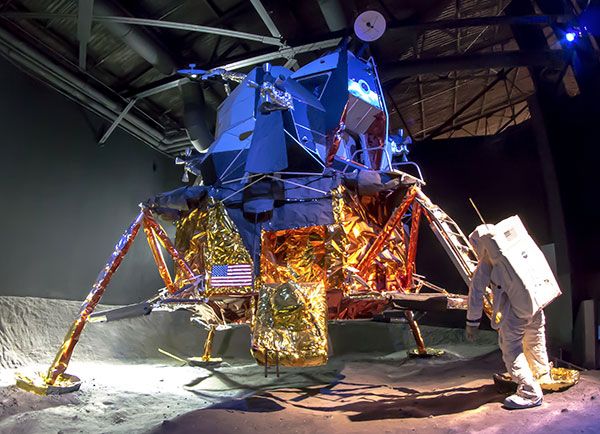Grumman Lunar Module LM-13

Photo Courtesy of Russ Loret
Specifications:
Height: 22' 9"
Width: 31'
Engines: Ascent - Rocketdyne 3500 lbs thrust
Descent - TRW 9870 lbs thrust
Reaction Control: (16) Marquardt 100 lbs thrust
Weight: 8600 lbs
Top Speed: 17,500 mph
Donor: National Air & Space Museum
Bethpage, 1972
On July 20, 1969, Neil Armstrong and Edwin Aldrin became the first human beings to walk on a world that was not their own. It was Grumman Lunar Module LM-5 "Eagle" that got them there. In all, six LM's successfully landed 12 men on the Moon between 1969 and 1972. The LM was a two-stage vehicle, Ascent and Descent, and both stages were covered with gold, silver and black thermal shielding which gave the spacecraft a fragile appearance. The LM was the first true spacecraft, performing its mission only in the vacuum of space, thus no aerodynamic qualities were needed. It was also built of extremely light thin metal, as the heavier it was, the more fuel it would have to burn while looking for a safe landing spot. This original Lunar Module, LM-13, was intended for the either Apollo 18 or 19 missions, which were ultimately canceled.
